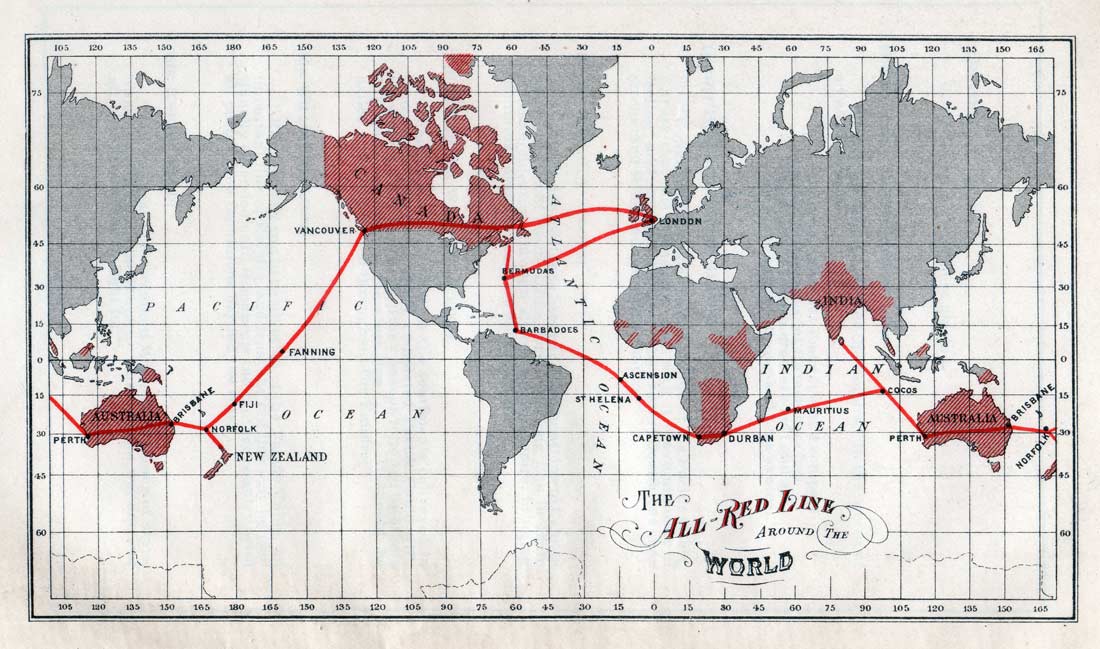The First Radios with Tuners
For my initial, Each One Teach One assignment, I will discuss the history and development of the first radios with tuners. Before diving into the development of this selective tuning technology, I'd like to take a step back and touch upon a brief history of the radio itself.
 |
| Guglielmo Marconi |
On April 25, 1874, Guglielmo Marconi was born. Marconi hypothesized that "If radiation could be increased, developed, and controlled, it would be possible to signal across space for considerable distances." He began to test his theory, and after considerable trial and error was able to transmit signals across short distances; Marconi however needed a way to amplify the signal. He constructed a receiving unit by connecting one terminal of an oscillator transmitter to the ground, and the other to a conductor on the top of a pole. This first embodiment of an antenna structure allowed for wireless communication to become a fact.
 |
| British cable telegraphy in World War One: The All-Red Line and Secure Communications - Innovating in Combat |
We can now move on to the year 1916. Let us first set the scene - The world was in the midst of the Great War, WW1 (1914-1918). The principal method for communication between military forces was by physical cable for verbal and Morse code transmission. During the war tens of thousands of these physical cables were laid, many of them being destroyed from hostile engagement. These cables were also able to be tapped and listened to by enemy forces.
 |
| Tuned Radio Frequency Receiver - 1916 |
This technology provided the ability to reduce interference and tune into a specific signal to listen to. Radios with TRF receivers provided a high selectivity, being able to differentiate between frequencies spaced closely together. It achieved great sensitivity because the tuned circuits were able to amplify the desired signal more effectively. This also allowed the ability for weaker signals to be received. It changed the world by simplifying the design of earlier radios, allowing wireless technology to become more accessible to the general public. It also mitigated interference, unlike earlier technologies like the regenerative receiver.
Unfortunately, like any other technology, radios with TRF receivers did not come without their faults. The tuning process was very complicated, and keeping multiple tuned circuits aligned while tuning over a wide range of frequencies was difficult. From a consumer standpoint, this created a learning curve when trying to properly tune into a specific frequency.
In conclusion, Ernst Alexanderson's patent in 1916 would change the course of the development that global communication would follow for generations to come. Although newer technologies would eventually surpass TRF-receiving technology, the early principles that arose from the ability to wirelessly tune into a radio frequency provided a foundation on top of which modern communication systems are built.
Citations
Archive. (n.d.). https://ia800708.us.archive.org/view_archive.php?archive=/28/items/crossref-pre-1923-scholarly-works/10.1007%252Fbf01704446.zip&file=10.1007%252Fbf01712468.pdf
Research guides: Persistent links for library resources: JSTOR. JSTOR - Persistent Links for Library Resources - Research Guides at University of Oregon Libraries. (n.d.). https://researchguides.uoregon.edu/persistentlinks/jstor
No comments:
Post a Comment